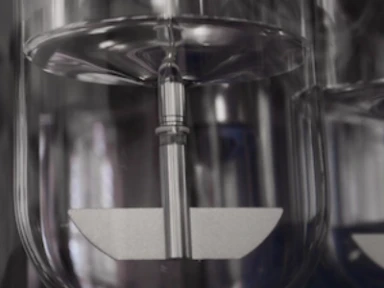The ACTE Study
Safety and Efficacy of Ezetimibe Added on to Rosuvastatin 5 or 10 mg Versus Up-Titration of Rosuvastatin in Patients with Hypercholesterolemia (the ACTE Study)
Harold E Bays, Michael H Davidson, Rachid Massaad, Doreen Flaim, Robert S Lowe, Andrew M Tershakovec, Charlotte Jones-Burton
Objective
The primary objective of the present study was to compare the low-density lipoprotein (LDL) cholesterol-lowering efficacy of ezetimibe added to stable rosuvastatin therapy (5 or 10 mg/day) versus doubling the rosuvastatin dose (from 5 to 10 mg/day or 10 to 20 mg/ day, pooled across doses).
Endpoints
The primary efficacy endpoint was the percentage of change from baseline in LDL cholesterol evaluated in the overall population (pooled across doses). The evaluation of this endpoint for each stratum separately, and the percentage of subjects reaching the National Cholesterol Education Program Adult Treatment Panel III (NCEP ATP III) recommended LDL cholesterol targets in the overall population (pooled across doses) constituted the key secondary efficacy endpoints. Other secondary efficacy endpoints included the percentage of subjects reaching the NCEP ATP III recommended LDL cholesterol targets evaluated in each stratum separately; the percentage of subjects achieving an LDL cholesterol level of <70 mg/dl in the overall population and in each stratum separately; and the percentage of change from baseline in other lipids, lipoproteins, and high-sensitivity C-reactive protein evaluated in the overall population and in each stratum separately. Safety and tolerability were assessed by review of all safety parameters, including adverse experiences and laboratory values.
Methods
The 6-week, randomized, double-blind, parallel-arm study included patients who were hypercholesterolemic, aged 18 to 79 years with a moderately high risk (subjects with ≥2 risk factors conferring a 10-year risk of CHD of 10% to 20%, as estimated from the Framingham risk scores), high risk without AVD (subjects with CHD risk equivalents such as diabetes mellitus or ≥2 risk factors conferring a 10-year risk of CHD ≥20%, as estimated from the Framingham risk scores), or high risk with AVD (subjects with established CHD or patients with CHD risk equivalents and other AVD [peripheral arterial disease, atherosclerotic aortic disease, or carotid artery disease]).
Once eligible, patients were assigned to receive run-in open-label rosuvastatin 5 or 10 mg/day for 4 weeks (5 weeks for those switching medication or treatment naïve) according to their cardiovascular risk, current use of lipid lowering therapy, and LDL level at screening. Patients were stratified according to their runin treatment (stratum I, rosuvastatin 5 mg; stratum II, rosuvastatin 10 mg). The subjects receiving rosuvastatin 5 mg during the run-in period (stratum I) were randomized to rosuvastatin 5 mg plus ezetimibe 10 mg add-on or rosuvastatin up-titration to 10 mg. Those receiving rosuvastatin 10 mg (stratum II) were randomized to rosuvastatin 10 mg plus ezetimibe 10 mg add-on or rosuvastatin up-titration to 20 mg.
Results
440 patients were administered the study drug, with 197 (44.8%) receiving rosuvastatin 5 mg and 243 (55.2%) receiving rosuvastatin 10 mg during the 4- to 5-week open label run-in period. Pooled data demonstrated that ezetimibe added to stable rosuvastatin 5 mg or 10 mg reduced LDL cholesterol by 21%. In contrast, doubling rosuvastatin to 10 mg or 20 mg reduced LDL cholesterol by 5.7% (between-group difference of 15.2%, p <0.001). Individually, ezetimibe plus rosuvastatin 5 mg reduced LDL cholesterol more than did rosuvastatin 10 mg (12.3% difference, p <0.001), and ezetimibe plus rosuvastatin 10 mg reduced LDL cholesterol more than did rosuvastatin 20 mg (17.5% difference, p <0.001). Compared to rosuvastatin up-titration, ezetimibe add-on achieved significantly greater attainment of LDL cholesterol levels of <70 or <100 mg/dl (59.4% vs 30.9%, p <0.001), and <70 mg/dl in all subjects (43.8% vs 17.5%, p <0.001); produced significantly greater reductions in total cholesterol, non–high-density lipoprotein cholesterol, and apolipoprotein B (p <0.001); and resulted in similar effects on other lipid parameters. Adverse experiences were generally comparable among the groups.
Conclusions
compared to up-titration doubling of the rosuvastatin dose, ezetimibe 10 mg added to stable rosuvastatin 5 mg or 10 mg produced greater improvements in many lipids’ parameters and achieved greater attainment of recommended LDL cholesterol targets in subjects with elevated LDL cholesterol and at moderately high/high coronary heart disease risk.
- Bays, H.E., Davidson, M.H., Massaad, R., Flaim, D., Lowe, R.S., Tershakovec, A.M. and Jones-Burton, C., 2011. Safety and efficacy of ezetimibe added on to rosuvastatin 5 or 10 mg versus up-titration of rosuvastatin in patients with hypercholesterolemia (the ACTE Study). The American journal of cardiology, 108(4), pp.523-530.


.webp/jcr:content/ROSETTE%20summary%20(1).webp)
.webp/jcr:content/The%20explorer%20study%20(1).webp)
